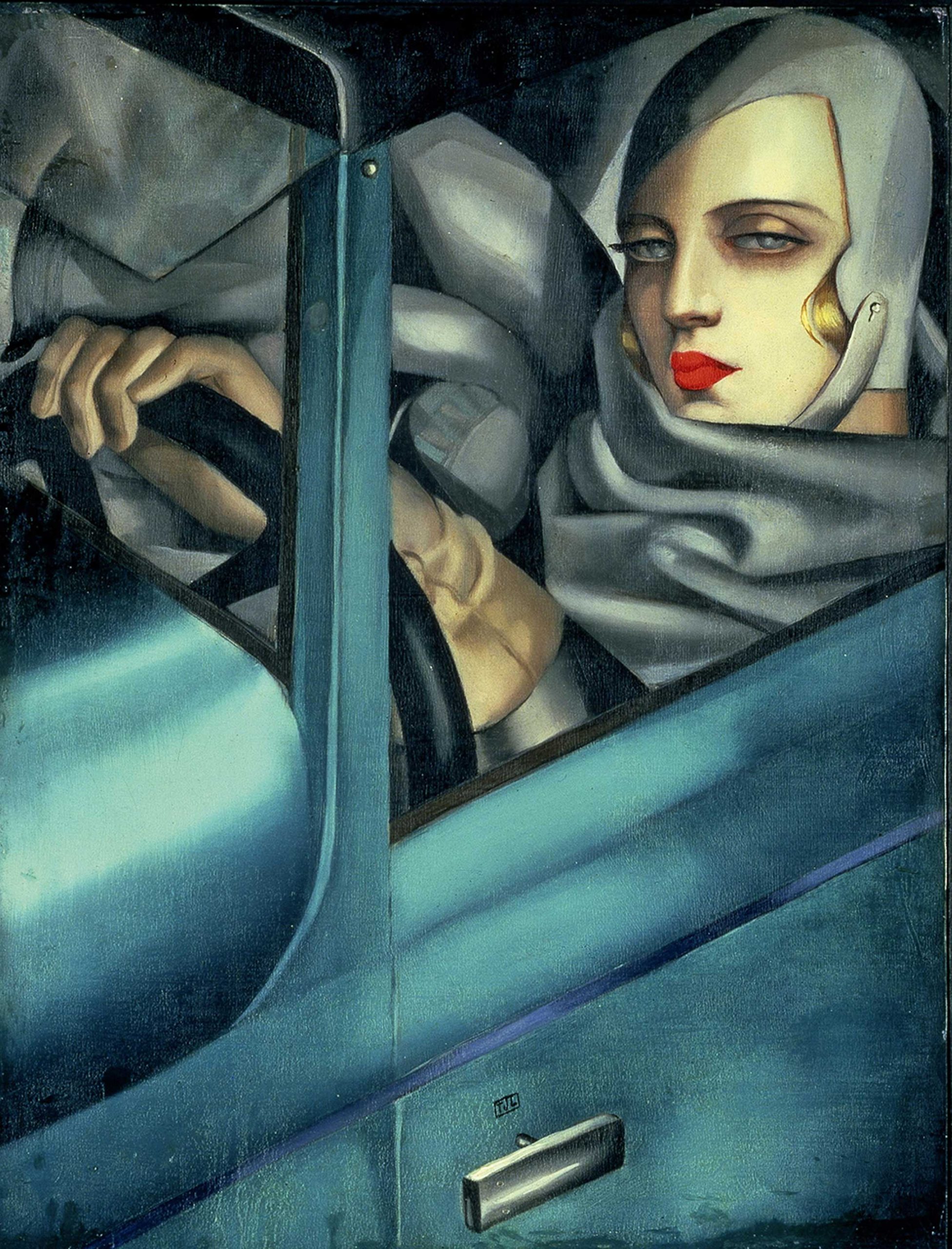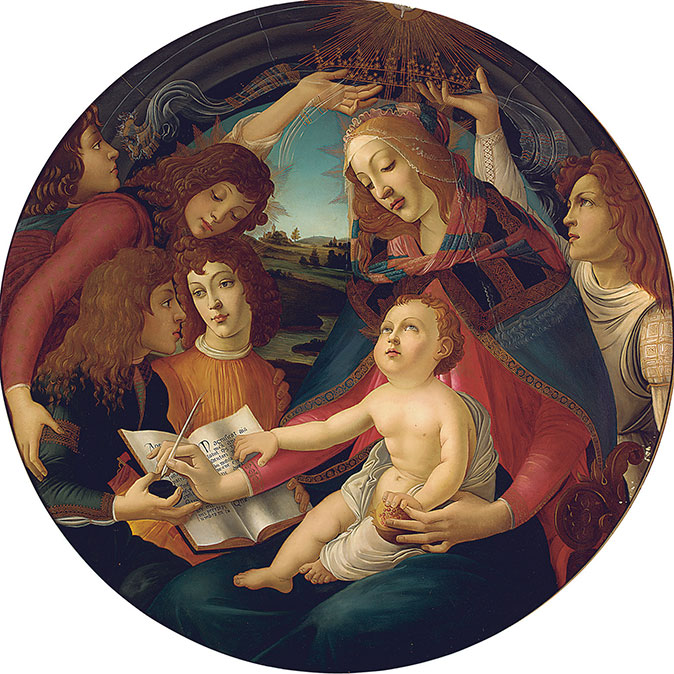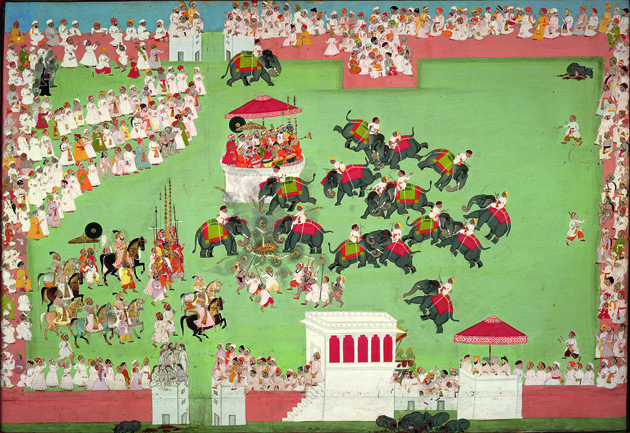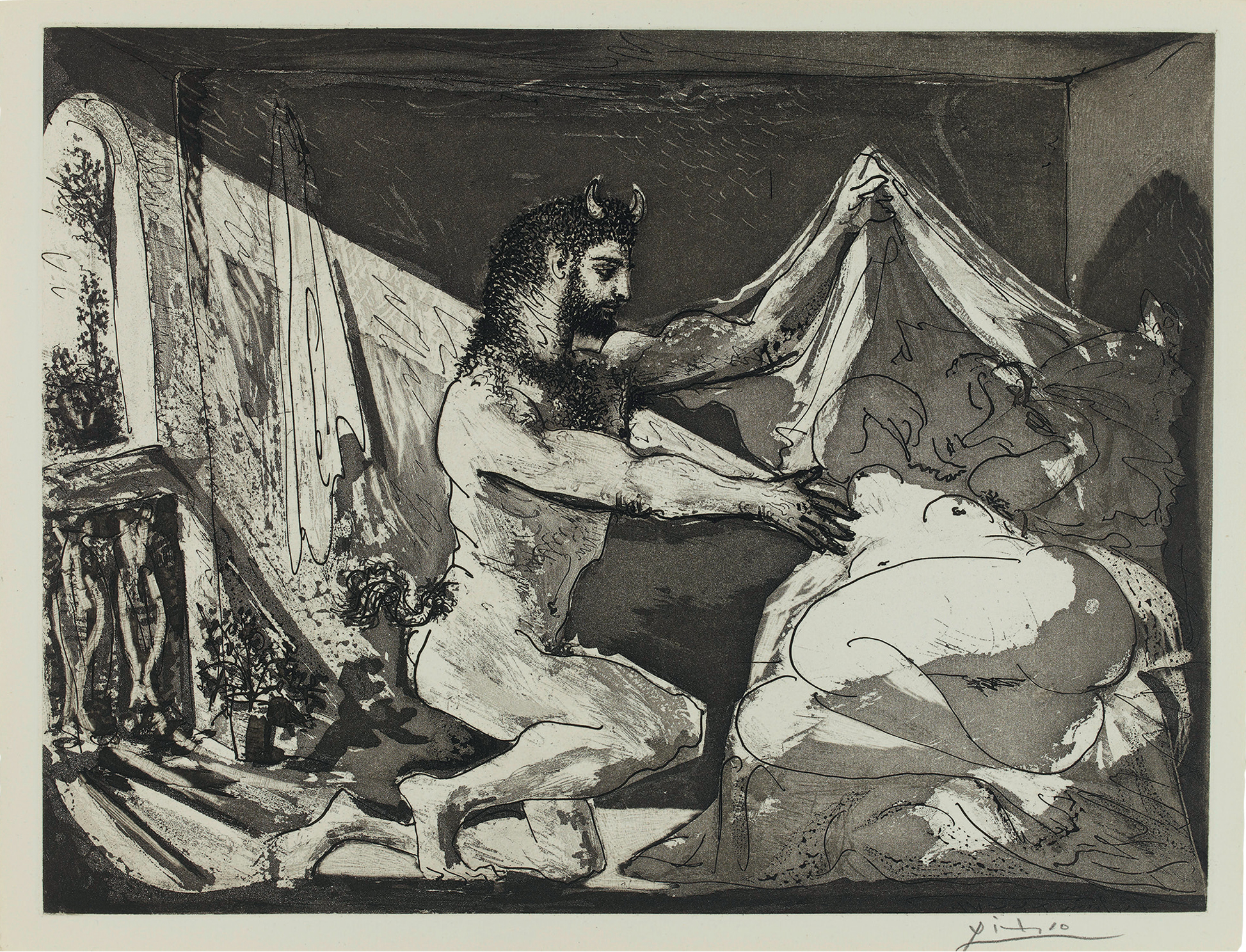My favourite painting: Leonie Benesch
Actress Leonie Benesch, star of the new BBC adaption of Around the World in 80 Days, chooses a beautiful Art Deco image by Tamara de Lempicka.


Leonie Benesch on Tamara in a Green Bugatti by Tamara de Lempicka
'Tamara herself in the driver’s seat, looking inaccessible, wealthy and in charge. Painted in 1929 during the Roaring Twenties and commissioned by Die Dame, a famous German magazine, it is an homage to women’s independence.
'I look at it, 96 years later, and it makes me feel as if I can do and achieve anything I put my mind to, despite or even because I am a woman. I’m mesmerised by the bold colours and shapes, the ease and coolness it radiates. She looks at me as if to say: “Of course you can. Don’t be ridiculous” and so… I shall.'
Leonie Benesch is an actress and a star of the BBC’s upcoming adaptation of Around the World in 80 Days.
John McEwen on Tamara de Lempicka
Art Deco, named after the Exposition Internationale des Arts Décoratifs in Paris (1925), was a celebration of post-First World War decorative art with an emphasis on luxury. Appropriately, this self-portrait was commissioned for the cover of the fashion magazine Die Dame, to symbolise ‘women’s liberation’, also a product of the war. Ironically, considering de Lempicka was Paris-based, France did not grant female suffrage until 1944. Germany and the UK (full suffrage 1928) gave women the vote from 1918.
Tamara Gurwik-Górska was born in Warsaw or possibly Moscow — accounts vary — her father a Jewish merchant, her mother the daughter of Polish bankers. At the age of 10, disgusted with a commissioned portrait of herself, she drew her sister, an artistic impulse compounded when, after feigning illness to skip Swiss boarding school, she toured Italy with her grandmother.
Her parents divorced and she married a Polish lawyer, Tadeusz Lempicki. In post-war Parisian exile, her husband’s indolence and the birth of her daughter made her decide to make a living as an artist. She trained with the fashionable André Lhote and soon made her ‘Art Deco’ reputation with erotic nudes and portraits of the high society in which she moved. ‘I was the first woman to make clear paintings, and that was the origin of my success… I was searching for a craft that no longer existed.’
As her daughter said, she had a ‘killer instinct’, steely professionalism combined with style and a taste for drugs and bisexual affairs. A rich second husband and the renewed war exiled her to the US and Mexico. Her Art Deco pictures, personified by this self-portrait, became unfashionable in her lifetime. No longer — her current auction record is £16.3 million.

Credit: Bridgeman Images
My favourite painting: Mark Price
'The picture reminds me of her: I swear she is an angel.'
Sign up for the Country Life Newsletter
Exquisite houses, the beauty of Nature, and how to get the most from your life, straight to your inbox.

My favourite painting: Nicholas Coleridge
Nicholas Coleridge chooses Maharana Jagat Singh attending an elephant fight by Syaji and Sukha as his favourite painting

My favourite painting: Jacqueline Wilson
'I looked at this painting and decided to write about a Victorian circus girl one day'

My favourite painting: Norman Ackroyd
Norman Ackroyd chooses his favourite painting for Country Life.
Country Life is unlike any other magazine: the only glossy weekly on the newsstand and the only magazine that has been guest-edited by HRH The King not once, but twice. It is a celebration of modern rural life and all its diverse joys and pleasures — that was first published in Queen Victoria's Diamond Jubilee year. Our eclectic mixture of witty and informative content — from the most up-to-date property news and commentary and a coveted glimpse inside some of the UK's best houses and gardens, to gardening, the arts and interior design, written by experts in their field — still cannot be found in print or online, anywhere else.
-
 'As a child I wanted to snuggle up with the dogs and be part of it': Alexia Robinson chooses her favourite painting
'As a child I wanted to snuggle up with the dogs and be part of it': Alexia Robinson chooses her favourite paintingAlexia Robinson, founder of Love British Food, chooses an Edwin Landseer classic.
By Charlotte Mullins
-
 The Pre-Raphaelite painter who swapped 'willowy, nubile women' for stained glass — and created some of the best examples in Britain
The Pre-Raphaelite painter who swapped 'willowy, nubile women' for stained glass — and created some of the best examples in BritainThe painter Edward Burne-Jones turned from paint to glass for much of his career. James Hughes, director of the Victorian Society, chooses a glass masterpiece by Burne-Jones as his favourite 'painting'.
By Charlotte Mullins
-
 'I can’t look away. I’m captivated': The painter who takes years over each portrait, with the only guarantee being that it won't look like the subject
'I can’t look away. I’m captivated': The painter who takes years over each portrait, with the only guarantee being that it won't look like the subjectFor Country Life's My Favourite Painting slot, the writer Emily Howes chooses a work by a daring and challenging artist: Frank Auerbach.
By Toby Keel
-
 My Favourite Painting: Rob Houchen
My Favourite Painting: Rob HouchenThe actor Rob Houchen chooses a bold and challenging Egon Schiele work.
By Charlotte Mullins
-
 My Favourite Painting: Jeremy Clarkson
My Favourite Painting: Jeremy Clarkson'That's why this is my favourite painting. Because it invites you to imagine'
By Charlotte Mullins
-
 The chair of the National Gallery names his favourite from among the 2,300 masterpieces — and it will come as a bit of a shock
The chair of the National Gallery names his favourite from among the 2,300 masterpieces — and it will come as a bit of a shockAs the National Gallery turns 200, the chair of its board of trustees, John Booth, chooses his favourite painting.
By Toby Keel
-
 'A wonderful reminder of what the countryside could and should be': The 200-year-old watercolour of a world fast disappearing
'A wonderful reminder of what the countryside could and should be': The 200-year-old watercolour of a world fast disappearingChristopher Price of the Rare Breed Survival Trust on the bucolic beauty of The Magic Apple Tree by Samuel Palmer, which he nominates as his favourite painting.
By Charlotte Mullins
-
 My favourite painting: Andrew Graham-Dixon
My favourite painting: Andrew Graham-Dixon'Lesson Number One: it’s the pictures that baffle and tantalise you that stay in the mind forever .'
By Country Life

